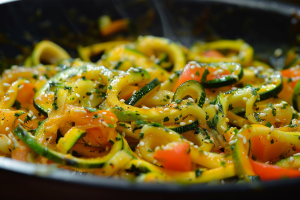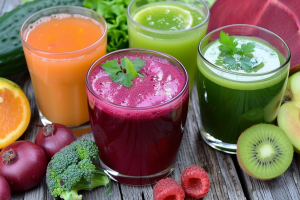Avoid Overeating: Tips & Tricks To Portioning Food Correctly

Ah, the familiar dance of the modern internet explorer: You start with noble intentions, bravely typing into the search bar, “How to stop binge eating.” or how to avoid overeating. You click with determination, hoping for answers that will magically transform your snack-happy life into a realm of kale and quinoa. But alas, the digital labyrinth leads you down a rabbit hole of conflicting advice and dubious promises. “How do I stop overeating?” you ask next, the desperation creeping into your keystrokes. You find yourself surrounded by lists of forbidden foods and complex meal plans, feeling more lost than ever. Finally, in a fit of frustrated irony, you search, “How to prevent binge eating,” only to find yourself stress-eating a bag of chips as you scroll through the endless contradictions. Fear not, fellow traveller of the web; let’s embark on a journey to decode the mysteries of appetite and cravings with a pinch of humour and a dollop of sanity.
Conquer Your Plate, Not Your Cravings: Tips for Healthy Portion Control & to avoid overeating
We’ve all been there. The aroma of a delicious dinner wafts through the air, your stomach growls a friendly hello, and suddenly that perfectly reasonable portion size you had in mind seems like a distant memory. But here’s the exciting secret: portion control isn’t about deprivation, it’s about unlocking a world of vibrant, delicious food that fuels your amazing body! Imagine this: you savour every bite of a satisfying meal, feeling energised and happy. No guilt, no regret, just pure enjoyment. That’s the magic of becoming a portion control pro and avoid overeating.
Beyond the Plate: Habits for a Balanced You
Portion control is just one piece of the healthy eating puzzle. It’s very important to have a healthy relationship with ourselves and our bodies. Let’s explore some important lifestyle habits that can enable your portion control journey:
Mindful Munching: The first step in mastering portion control is recognising that hunger is a natural human experience. Rather than battling it, let’s embrace it by tuning in to our body’s signals. Are those true hunger pangs, or could it be something else? Perhaps your body is craving healthy fats, or maybe you’re simply thirsty, stressed, or even a bit bored. Taking a moment to drink a refreshing glass of water, practising a few deep breaths, or stepping outside for a brief walk can work wonders.
Savour Slow and Steady: We’ve all devoured a meal in record time only to feel ravenous an hour later. This is because it takes about 20 minutes for your stomach to send signals to your brain that you’re full. Slow down! Savour each bite, put your fork down between chews, and engage in conversation at the table. This mindful eating allows you to appreciate your food and recognize satiety cues before overdoing it.
Pre-meal salad:
Leafy greens like lettuce, spinach, and kale are packed with essential micronutrients and are incredibly low in calories. This allows you to fill a generous bowl without guilt. But the benefits go beyond vitamins and minerals. These greens are also champions of fibre, keeping you feeling full for longer. This natural appetite control helps you avoid overeating during your main course. So, next time you sit down for a meal, start with a salad.
Prioritise Sleep: When sleep-deprived, your body produces more ghrelin, the hunger hormone, making you crave food. Less sleep also means less leptin, the satiety hormone, leaving you feeling unsatisfied. Poor sleep disrupts your body’s natural rhythm, making it harder to resist cravings and control portions. Aim for 7-8 hours of quality sleep each night.
Manage Stress: Stress triggers the “fight-or-flight” response, making your body crave quick energy. This can lead to unhealthy food choices and overeating. Stress hormones like cortisol can also increase fat storage and disrupt feelings of fullness. By managing stress, you’ll make calmer food choices and feel satisfied with less. Find healthy coping mechanisms like exercise, meditation, or spending time with loved ones to manage stress levels.
Dehydration Disguise:
Sometimes thirst masquerades as hunger. The hypothalamus, a part of the brain, plays a role in regulating both hunger and thirst. When you’re dehydrated, the hypothalamus might send signals that feel similar to hunger cues. Drink plenty of water throughout the day to stay hydrated and avoid mistaking thirst for hunger pangs.
Healthy Swaps:
Swapping a few food items for lower calorie (and more nutrition) ones can bring your calorie intake reasonably low so you can focus on upping the nutrition within your calorie intake. Here are some examples, Butter for Extra virgin olive oil, Full-fat salad dressing for light vinaigrette or a homemade dressing with olive oil, rice with cauliflower rice, noodles with zucchini strips, sugary breakfast cereals for oatmeal with berries, wholesome seeds and nuts, Fried chicken or fish for grilled, baked, or poached chicken or fish, Potato chips for popcorn and sugary sodas for cold press juices.
Become a Portion Pro
Now that you’re tuned into your body’s signals, let’s translate that into practical portion control strategies. Here are some handy tools and techniques:
The Plate Method: Forget complicated measuring cups. Imagine your plate divided into sections. Half should be filled with non-starchy vegetables, a quarter with lean protein, and the remaining quarter with whole grains.
Hand-Sized Portions: Your fist is roughly the size of a recommended serving of protein, like a delicious chicken breast or a perfectly cooked fish fillet. Your palm? That’s about the perfect amount of complex carbs for your plate, like a slice of whole-wheat bread or a scoop of brown rice. And your cupped hand? That’s a fantastic portion for those colourful fruits and veggies that make your meals sing!
Read Food Labels: Food labels are your secret weapon! Learn to decipher those “serving size” numbers and calories per serving. This is especially important for processed foods that might have sneaky serving sizes hiding in plain sight. By becoming a label detective, you’ll be a portion control whiz in no time!
Pre-portion Snacks:
We’ve all fallen victim to the bottomless chip bag. But what if there was a better way? Portion out healthy snacks like nuts, baby carrots, yoghurt with juicy berries, or pre-sliced veggies into individual containers. Now, when that snack attack hits, you grab a perfectly portioned container instead of mindlessly munching from a giant bag. You’re a snacking superhero!
Meal Prepping: Cooking large batches and portioning them out for future meals is a game-changer. Prepping meals in advance lets you control exactly how much goes on your plate. No more eyeballing ingredients or grabbing unhealthy options when you’re rushed. Portioned meals mean you avoid overeating and stick to your healthy goals! This is your healthy hero on busy days when takeout might seem tempting. Plus, it reduces food waste – double win!
Downsize Dinnerware: Our brains are wired to perceive a full plate as a satisfying meal. Let’s use this to our advantage! Use smaller plates and bowls. A smaller plate creates the illusion of abundance, even with a moderate portion. You’ll feel full and happy and easily avoid overeating.
Planning Meals: Spontaneous meals can sometimes lead to unhealthy choices. They can make it hard for you to avoid overeating. Dedicate some time each week to plan your meals and snacks. It doesn’t have to be complicated – jot down some ideas. They can be based on what’s on sale at the store or browse healthy recipe websites for inspiration. Planning is your secret weapon for amazing, portion-controlled meals!
Beware of Sugary Drinks:
Opt for water, unsweetened tea, or black coffee instead of sugary drinks. They can increase your caloric intake for zero nutritive value and sabotage your portion control efforts. Do check out FTH cold press juices as other easy to incorporate low calorie healthy swaps.
Remember: It’s a Journey, Not a Destination
There will be days when you cannot avoid overeating, and that’s okay! The key is to be kind to yourself, learn from the experience, and get back on track the next day. By incorporating these tips into your routine, portion control will become second nature. You’ll be well on your way to developing a healthy relationship with food. Celebrate your non-scale victories – increased energy levels, better digestion, and a newfound appreciation for mindful eating.




